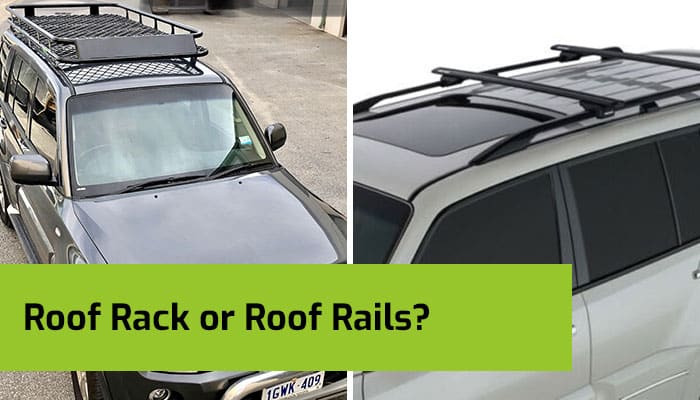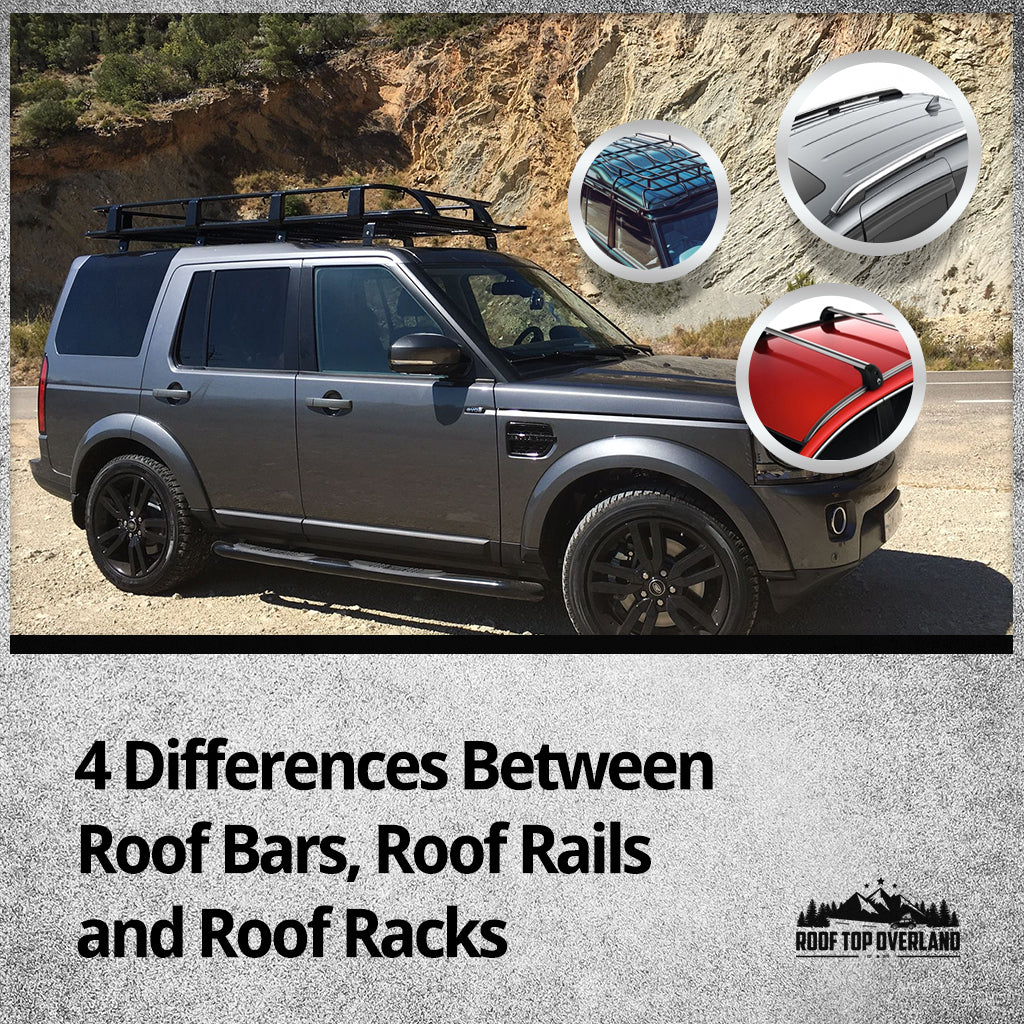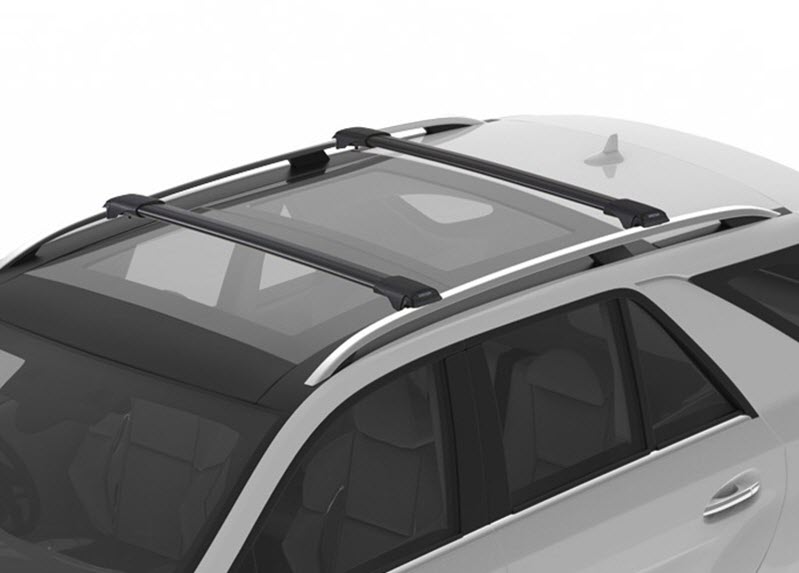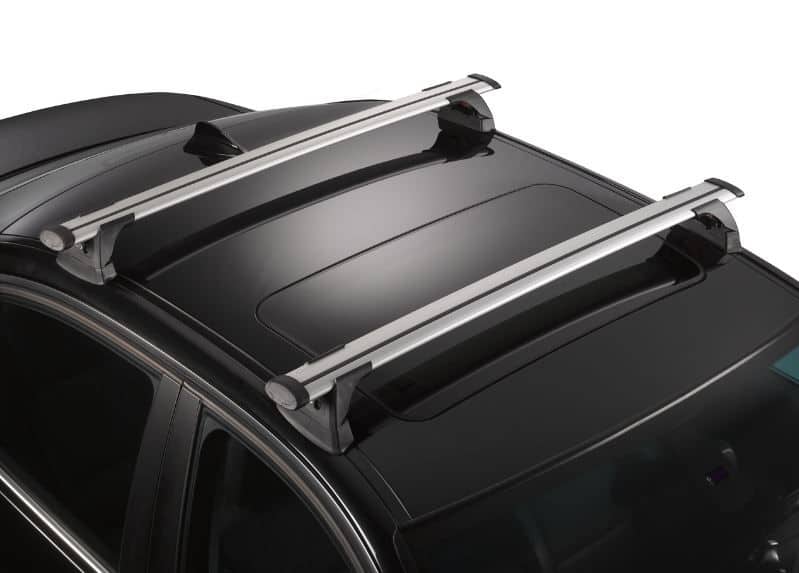Roof racks are attachments that carry cargo on a vehicle’s roof. Roof rails are fixed structures running along the roof’s length.
Roof racks and roof rails are essential for transporting bulky items. Roof racks are crossbars that attach to vehicles, making it easier to carry gear, luggage, or outdoor equipment. Roof rails, on the other hand, are factory-installed or aftermarket longitudinal bars running along the sides of the roof.
These rails provide a base for attaching roof racks or other carriers. Both options enhance storage capacity, but they serve different purposes. Roof racks offer versatility for various attachments, while roof rails provide a solid foundation for additional storage solutions. Understanding their differences helps in choosing the right option for your needs.
Roof Racks
Roof racks are essential for many adventure enthusiasts. They offer a versatile solution for transporting gear on the roof of your vehicle. From bikes to kayaks, roof racks provide a secure method to carry your items safely and efficiently.
Design And Structure
Roof racks come in various designs. The basic structure includes crossbars that attach to your vehicle’s roof. These crossbars can be made from different materials like aluminum or steel. Many roof racks also feature adjustable parts to fit different vehicle sizes.
Roof racks can be installed on cars, SUVs, and trucks. Some models offer lockable features for added security. The design ensures minimal wind resistance, which helps in maintaining fuel efficiency.
| Material | Benefits |
|---|---|
| Aluminum | Lightweight, rust-resistant |
| Steel | Durable, strong |
Common Uses
Roof racks serve multiple purposes. They are commonly used for outdoor activities. Below is a list of common uses:
- Bicycle Transport: Ideal for carrying bikes on road trips.
- Kayak Carrying: Perfect for transporting kayaks safely.
- Luggage: Great for carrying extra luggage on family vacations.
- Ski Equipment: Useful for transporting skis and snowboards during winter.
Roof racks are also useful for professional needs. Many tradespeople use them to carry ladders and tools. They offer a practical solution for those who need to transport bulky items regularly.
Roof Rails
Roof rails are a crucial part of your vehicle’s exterior. These structures run along the length of your car roof. They provide a solid base for attaching various accessories.
Design And Structure
Roof rails are sleek and stylish. They blend seamlessly with your car’s design. They are made from durable materials like aluminum or steel. This ensures they can handle heavy loads.
Most roof rails are adjustable. You can move them to fit your cargo needs. They are also easy to install and remove.
| Feature | Details |
|---|---|
| Material | Aluminum or Steel |
| Adjustability | Yes |
| Installation | Easy |
Common Uses
Roof rails are versatile. They support various outdoor activities. Here are some common uses:
- Carrying Luggage: Attach a roof box for extra storage space.
- Transporting Bikes: Secure your bikes with bike racks.
- Hauling Kayaks: Use special mounts for water sports gear.
- Camping Gear: Perfect for tents, sleeping bags, and other equipment.
Using roof rails makes your trips more enjoyable. You can carry all you need without cluttering your car’s interior.
Installation Process
The installation process of roof racks and roof rails is crucial for safety. This process also ensures optimal performance. Let’s dive into the steps for each.
Roof Racks Installation
Installing roof racks involves several steps. Ensure you have the right tools. Follow these steps for a secure installation:
- Measure the roof of your vehicle.
- Align the roof racks with the mounting points.
- Secure the racks using bolts and nuts.
- Check for tightness to ensure stability.
Always use the manufacturer’s manual. This ensures you follow the correct procedure. Proper installation prevents accidents and damage.
Roof Rails Installation
Installing roof rails is slightly different. Roof rails often come pre-installed in many vehicles. If not, follow these steps:
- Clean the area where rails will be installed.
- Mark the spots for drilling holes.
- Drill holes carefully to avoid damage.
- Attach the rails using screws or bolts.
- Test for stability and tightness.
Ensure you use high-quality materials. Poor quality can lead to wear and tear. Always double-check your work for safety.

Credit: greatracks.com.au
Load Capacity
Understanding the load capacity of roof racks and roof rails is essential. This helps you choose the right option for your needs. It’s crucial to know how much weight each can handle. This ensures safe and efficient transport of your gear.
Roof Racks Capacity
Roof racks are designed to carry heavy loads. They are ideal for bulky items such as bikes, kayaks, and cargo boxes. The load capacity of roof racks can vary. Here’s a quick comparison:
| Type of Roof Rack | Load Capacity (lbs) |
|---|---|
| Standard Roof Rack | 150-200 |
| Heavy-Duty Roof Rack | 250-300 |
Always check the manufacturer’s guidelines. This ensures you do not exceed the recommended weight limit. Overloading can damage the roof rack and your vehicle.
Roof Rails Capacity
Roof rails are often used as a base for roof racks. They provide a versatile option for attaching various carriers. Roof rails themselves have a load capacity. This depends on the vehicle model and design:
- Compact Cars: 75-100 lbs
- SUVs: 150-200 lbs
- Trucks: 200-250 lbs
It’s important to note that roof rails alone may not carry as much weight as roof racks. But they offer flexibility for different attachments. Always refer to your vehicle’s manual for specific load limits.
Aesthetics And Design
Roof racks and roof rails are popular choices for vehicle owners. They offer extra storage space and enhance functionality. But, their aesthetics and design also play a crucial role. This section focuses on their visual appeal and vehicle compatibility.
Visual Appeal
Roof racks are versatile and practical. They often have a rugged and utilitarian look. This design suits outdoor enthusiasts and adventurers.
Roof rails, on the other hand, are sleek and streamlined. They integrate well with a vehicle’s design. This creates a polished and elegant appearance.
For those who value visual appeal, roof rails might be the better choice. They enhance the overall look of the vehicle without being intrusive.
Vehicle Compatibility
Roof racks are generally universal. They can fit on almost any vehicle with the right mounting system. This makes them highly adaptable and flexible.
Roof rails are often vehicle-specific. Manufacturers design them to blend with the car’s original style. They may not be interchangeable between different makes and models.
Here is a quick comparison of vehicle compatibility:
| Feature | Roof Racks | Roof Rails |
|---|---|---|
| Universal Fit | Yes | No |
| Vehicle-Specific Design | No | Yes |
| Easy Installation | Moderate | Easy |
| Visual Integration | Low | High |
Choosing between roof racks and roof rails depends on your needs. Roof racks offer flexibility and functionality. Roof rails provide a sleek look and better integration with the vehicle.
Cost Considerations
Choosing between roof racks and roof rails involves understanding cost differences. This section explores the cost implications of each option.
Roof Racks Cost
Roof racks are generally more affordable. They range from $50 to $500.
Factors affecting cost include:
- Material: Aluminum racks are pricier than steel.
- Brand: Known brands cost more.
- Design: Aerodynamic designs increase the price.
| Type | Price Range |
|---|---|
| Basic Roof Racks | $50 – $150 |
| Mid-Range Roof Racks | $150 – $300 |
| Premium Roof Racks | $300 – $500 |
Roof Rails Cost
Roof rails are more expensive. They start at $200 and go up to $1000.
Cost factors include:
- Vehicle Compatibility: Custom-fit rails cost more.
- Installation: Professional installation can add $100 to $300.
- Material: Stainless steel is more expensive than aluminum.
| Type | Price Range |
|---|---|
| Basic Roof Rails | $200 – $400 |
| Mid-Range Roof Rails | $400 – $700 |
| Premium Roof Rails | $700 – $1000 |
Safety And Regulations
Understanding the safety and regulations for roof racks and roof rails is vital. Both options have distinct safety standards and legal requirements. Proper knowledge ensures your travel is safe and compliant.
Safety Standards
Roof racks and roof rails must meet specific safety standards. These standards ensure they can handle loads and remain secure during travel.
| Aspect | Roof Racks | Roof Rails |
|---|---|---|
| Load Capacity | Varies by model, often up to 150 lbs | Typically up to 200 lbs |
| Installation | Usually requires additional tools | Often pre-installed on vehicles |
| Stability | Secure with crossbars and clamps | Fixed to car’s roof |
Legal Requirements
Both roof racks and roof rails must comply with legal requirements. These rules ensure safe installation and use on public roads.
- Weight Limits: Do not exceed vehicle’s roof weight limit.
- Visibility: Ensure loaded items do not block driver’s view.
- Height Restrictions: Check local laws for height limits.
Ensure your roof rack or rail is installed correctly. Follow the manufacturer’s guidelines. This helps avoid legal issues and ensures safety.

Credit: rooftopoverland.com
User Experience
When deciding between roof racks and roof rails, user experience plays a crucial role. Each option offers unique benefits and challenges. Let’s delve into the user experience aspects for both, focusing on ease of use and maintenance.
Ease Of Use
Roof racks are generally more straightforward to install. They come with detailed instructions and often need basic tools. Most roof racks use a clamping mechanism, making them easy to secure. They are designed to fit various car models, adding to their versatility.
Roof rails offer a different ease of use. They are usually pre-installed on many vehicles. This eliminates the need for a separate installation process. Roof rails provide a solid base for attaching additional accessories like crossbars and cargo boxes.
Here’s a quick comparison table for clarity:
| Aspect | Roof Racks | Roof Rails |
|---|---|---|
| Installation | Easy with basic tools | Often pre-installed |
| Versatility | Fits various car models | Requires compatible accessories |
| Time Required | Short | None, if pre-installed |
Maintenance
Roof racks need regular checks to ensure they remain secure. Tighten bolts and inspect clamps for signs of wear. Cleaning is also essential to prevent rust, especially if metal components are exposed.
Roof rails are low-maintenance due to their durable construction. They often require less frequent checks. However, it is still advisable to inspect the attachment points. Ensure there are no loose screws or signs of corrosion.
Maintenance tips for both:
- Regularly inspect for wear and tear
- Clean to prevent rust and dirt build-up
- Tighten bolts and screws as needed
Choosing between roof racks and roof rails depends on your specific needs. Consider both ease of use and maintenance requirements.

Credit: www.yakima.com.au
Frequently Asked Questions
What Are Roof Racks Used For?
Roof racks are used for transporting large items like bikes, kayaks, and luggage. They provide additional storage space on your vehicle’s roof.
Are Roof Rails The Same As Roof Racks?
No, roof rails run along the length of the car’s roof. Roof racks are crossbars that connect to roof rails or mounting points.
Can You Install Roof Racks On Roof Rails?
Yes, roof racks can be installed on roof rails. They provide a secure base for attaching various carriers and accessories.
Which Is Better: Roof Racks Or Roof Rails?
It depends on your needs. Roof racks are better for transporting items. Roof rails are useful for mounting various roof rack systems.
Conclusion
Choosing between roof racks and roof rails depends on your needs and vehicle type. Roof racks offer versatility and easy installation. Roof rails provide a sleek look and are permanent. Assess your requirements and budget to make an informed choice.
Both options enhance your vehicle’s storage capabilities effectively.

